【Learning Points】
- Common assistive devices include wheelchairs and walking aids, but the choice of the right device depends on individual needs.
- When using a wheelchair, whether going uphill or downhill, the patient should face upwards for safety.
- For walking aids, the height should be adjusted appropriately, and should be placed securely on the ground to prevent falls during use.
I.What is assistive devices?
The term " assistive devices " is an abbreviation for assistive technology devices, which are invented to solve difficulties or inconveniences in life, it helps users to perform various activities of daily life, such as living, working, studying and relaxing.
II.Common assistive devices used in ward
- Wheelchair
- Classification of wheelchair
Wheelchairs can be divided into manual wheelchair, electric wheelchair, high-backed reclining wheelchair(removable in several places), orthopaedic wheelchair. - The introduction of different kinds of wheelchairs
- Manual wheelchair: suitable for patients with lower limb weakness (Figure 1).
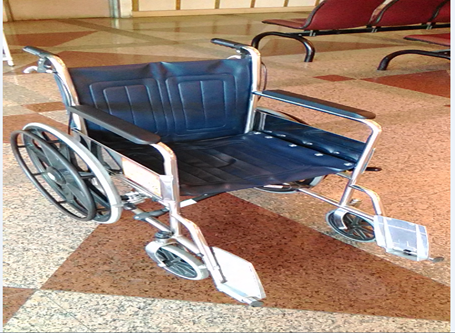
Figure 1 Manual wheelchair - Electric wheelchair: suitable for patients who are capable of autonomous mobility but have low physical endurance (Figure 2-1, Figure 2-2).
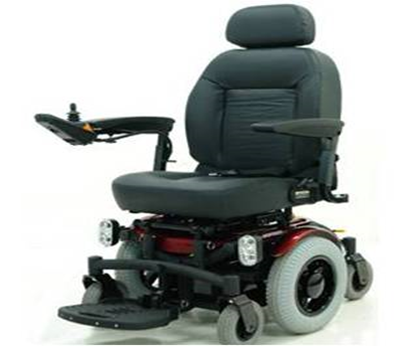
Figure 2-1 Simple electric wheelchair

Figure 2-2 double electric wheelchair - High-back reclining wheelchair: paraplegic, the use of this type of wheelchair, can make the skin pressure area dispersed, to avoid the occurrence of pressure injuries, the removable armrests and pedals are designed to facilitate patient mobility (Figure 3).
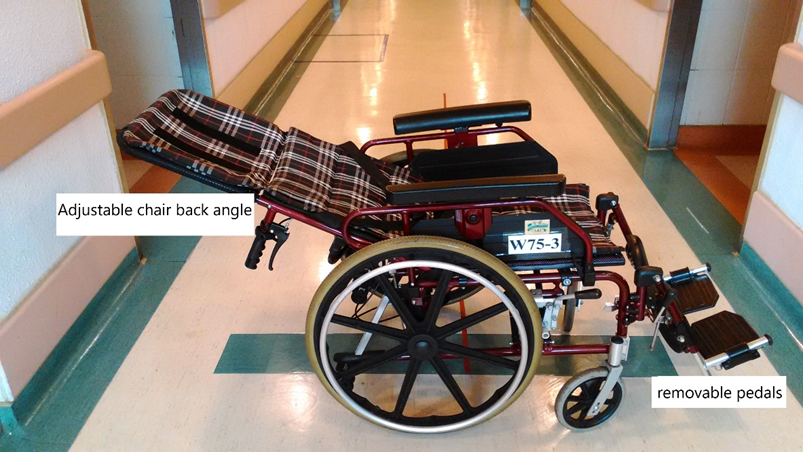
Figure 3 High-back reclining wheelchair - Orthopaedic wheelchair: this wheelchair elevates the lower limbs and is suitable for patients with fractures or foot injuries (Figure 4).
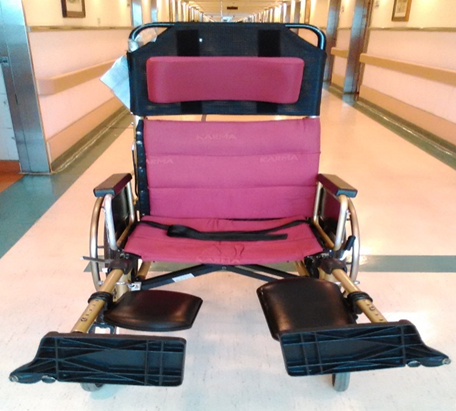
Figure 4 Orthopaedic wheelchair
- Manual wheelchair: suitable for patients with lower limb weakness (Figure 1).
- Steps to follow during wheelchair using:
- Open the wheelchair (Figure 5).
.Use both hands to open the wheelchair but pushing the bilateral arm rests.
.Press down on both sides of the cushion with your palms to open the seat.
.Successfully opened wheelchair.
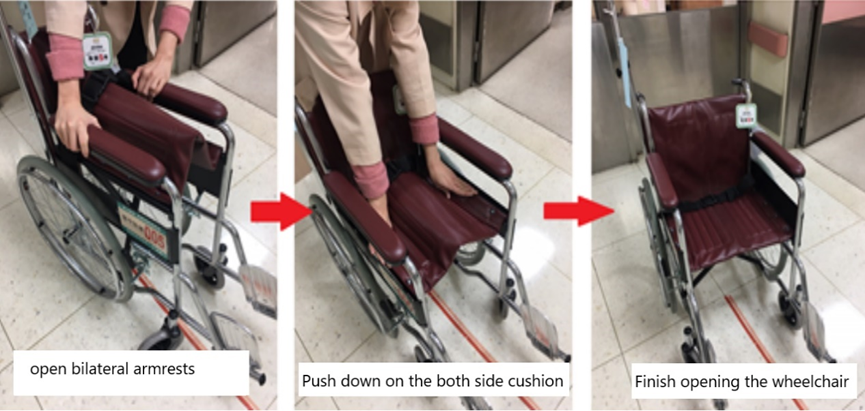
Figure 5 Open the wheelchair - Transfer to the wheelchair (Figure 6).
.Turn on the brake.
.Lift up the pedals.
.Transfer the patient to the wheelchair by grasping his back belt.
.Put back the pedals and position both legs on the pedals.

Figure 6 Transfer to the wheelchair - Collapsing the wheelchair (Figure 7).
.Retract the pedals.
.Hold the wheelchair by the centre of the seat and pull upwards.
.Wheelchair collapsed.

Figure 7 Collapsing the wheelchair
- Open the wheelchair (Figure 5).
- Notice while using the wheelchair
- Always fasten the seat belt if you are sitting in a high-backed reclining wheelchair or if you are unable to maintain your posture.
- The patient should face the upward side of slope during propelling a wheelchair on a slope.
- The pedals should be retracted before getting into or out of the wheelchair to prevent the patient from falling.
- Wheelchair maintenance
- Periodically inspect the wheelchair’s back, seat, pedals, armrests, and wheels. If screws loosened, please fasten them.
- Check wheelchair’s brake handle, if the braking function fails, replace it right away.
- Clear the debris in the wheelchair to maintain it free to move.
- Classification of wheelchair
- Walking assistive devices
- Type:
- Standard adjustable crutches, such as single cane (Figure 8), quadricane (Figure 9), crutches (Figure 10), forearm crutches (Figure 11).
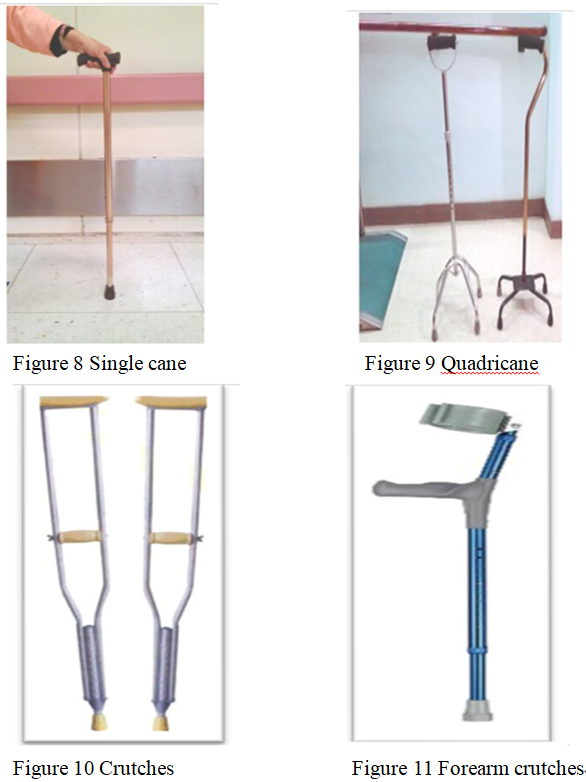
- Walker, such as general type (Figure 12), front-wheeled walker (Figure 13), four-wheeled walker (Figure 14).
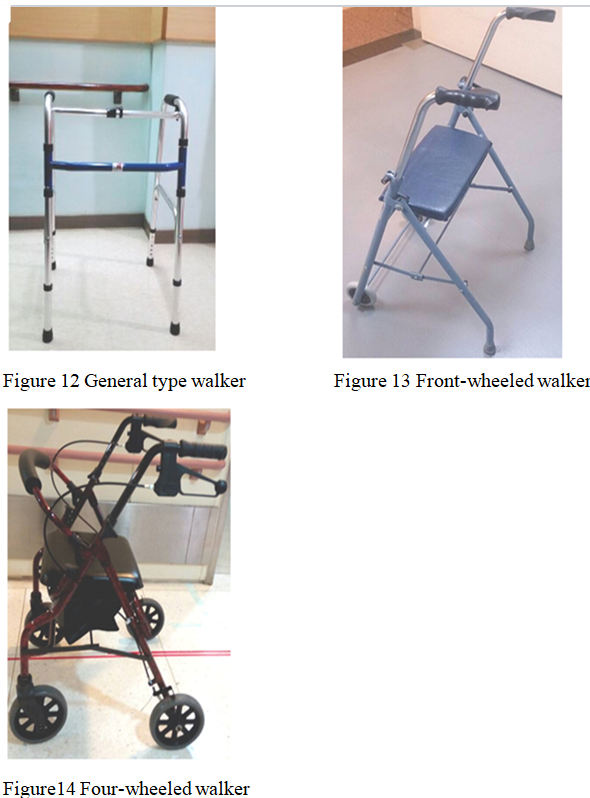
- Standard adjustable crutches, such as single cane (Figure 8), quadricane (Figure 9), crutches (Figure 10), forearm crutches (Figure 11).
- Function:
- Standard adjustable crutches: reduce the muscular demand on the affected side during walking.
- Walker: large area of support, high stability, up to 100% weightlessness of one lower limb, suitable for patients with severe limitations in lower limb weight-bearing capacity.
- How to change the height of cane:
- Standard adjustable crutches:Measurement with stand: left the elbow flexion about 20-30 degree during standing holding the cane at one side (Figure15, Figure 16).
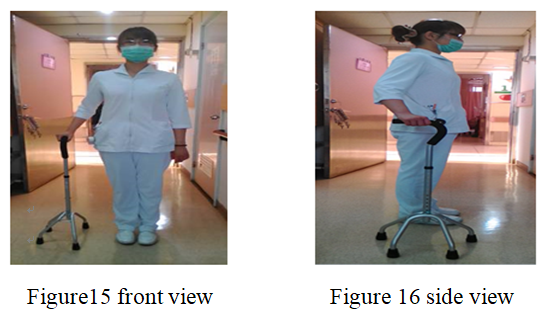
- Walker: Similar to standard adjustable crutches, let the elbows flexion 20-30 degree at both sides during standing in the walker.
- Standard adjustable crutches:Measurement with stand: left the elbow flexion about 20-30 degree during standing holding the cane at one side (Figure15, Figure 16).
- Notice:
- Standard adjustable crutches:
.The balance of the patient should be good because the supported base of the cane is small.
.It should be held on the healthy side. - Walker:
.Make sure the walker’s function is intact.
.If the rubber at the bottom of walker wears, replace a new one.
.Wear suitable pants and shoes.
.Adjust the height of armrests to provide best supportive function.
.Use the walker to prepare walking under cane assistance in the future.
.The patient should have caregiver accompanying during walking, avoid wet ground to prevent falling down.
. Move the walker forward about 40cm each time, and then walk forward one step.
.Walker is not suitable during stairs climbing.
.Increase daily activities by walker gradually.
- Standard adjustable crutches:
- Type:
III.Conclusion
Suitable assistive devices according to abilities of the patient and the caregiver, the care mode, and the care environment. Before choosing, consult professional evaluation staffs of assistive devices and do a complete evaluation and training can reduce chances of caregivers and patients being injured. Thereby reducing the burden and pressure of caregivers to improving the quality of care.
Suitable assistive devices according to abilities of the patient and the caregiver, the care mode, and the care environment. Before choosing, consult professional evaluation staffs of assistive devices and do a complete evaluation and training can reduce chances of caregivers and patients being injured. Thereby reducing the burden and pressure of caregivers to improving the quality of care.
簡易測驗
Let us take the quiz to make sure you understand
評語
統計結果不開放
請登入後才可以評分
未登入或權限不足!
- 位置
-
- 資料夾名稱
- English
- 上傳者
- 黃郁琇
- 單位
- 中榮護理衛教
- 英文名稱
- Replacement assistive devices introduction
- 分類
- 安全
- 科別
- 英語
- 癌症照護
- 否
- 建立
- 2024-01-28 09:18:46
- 制訂日期
- 2016-10-13
- 最近修訂
- 2024-03-20 10:53:00